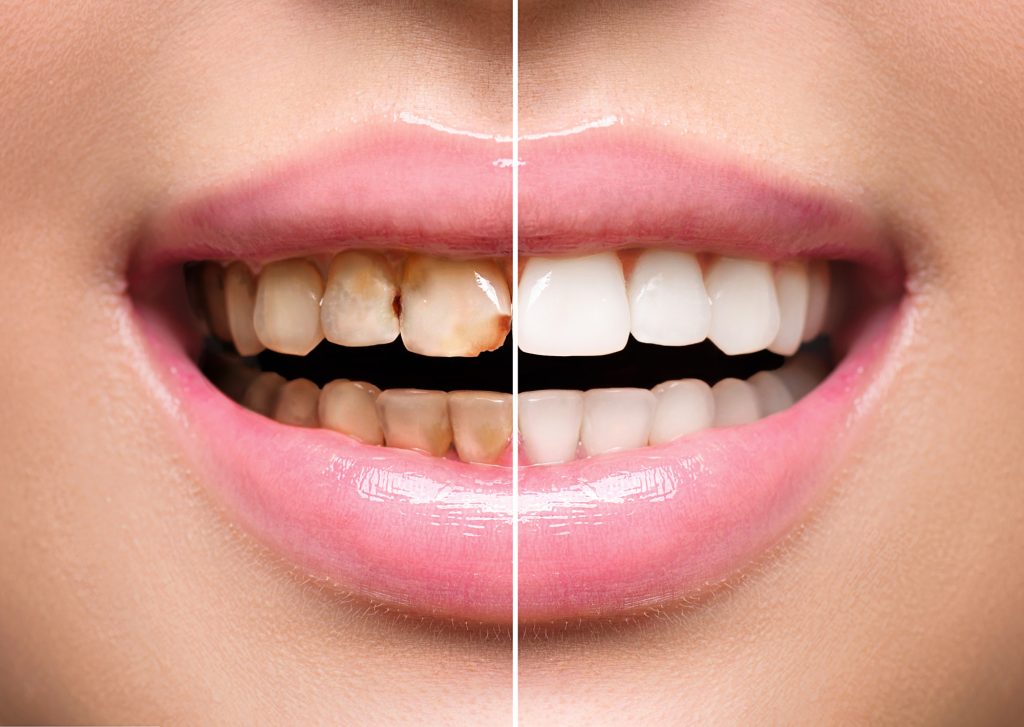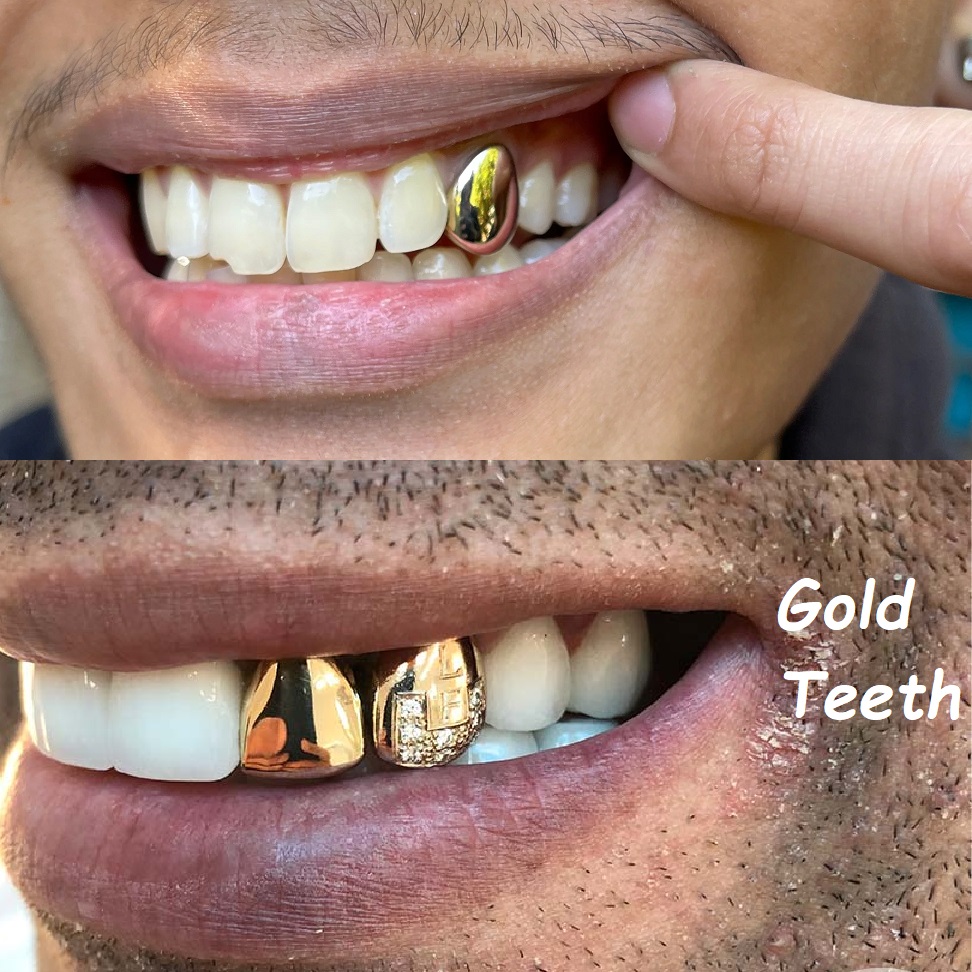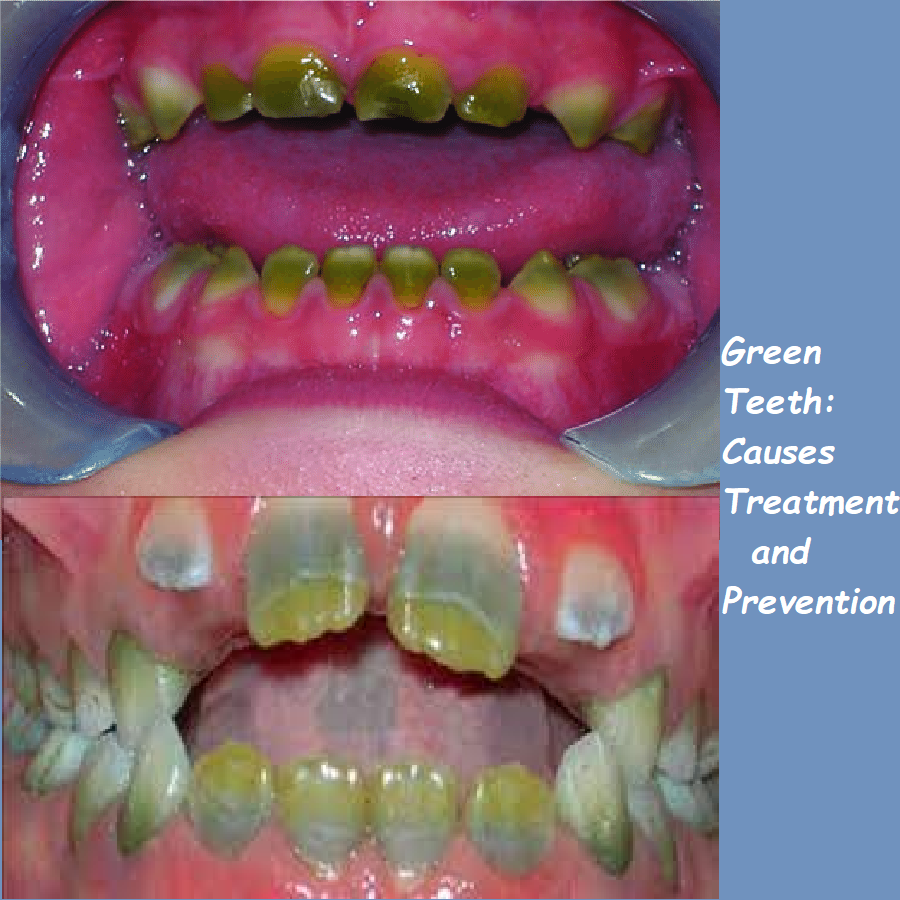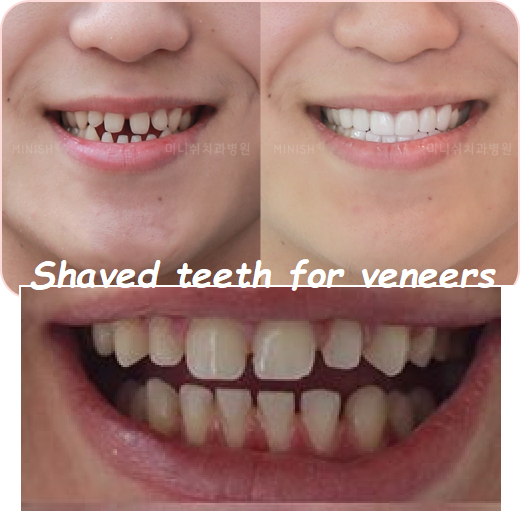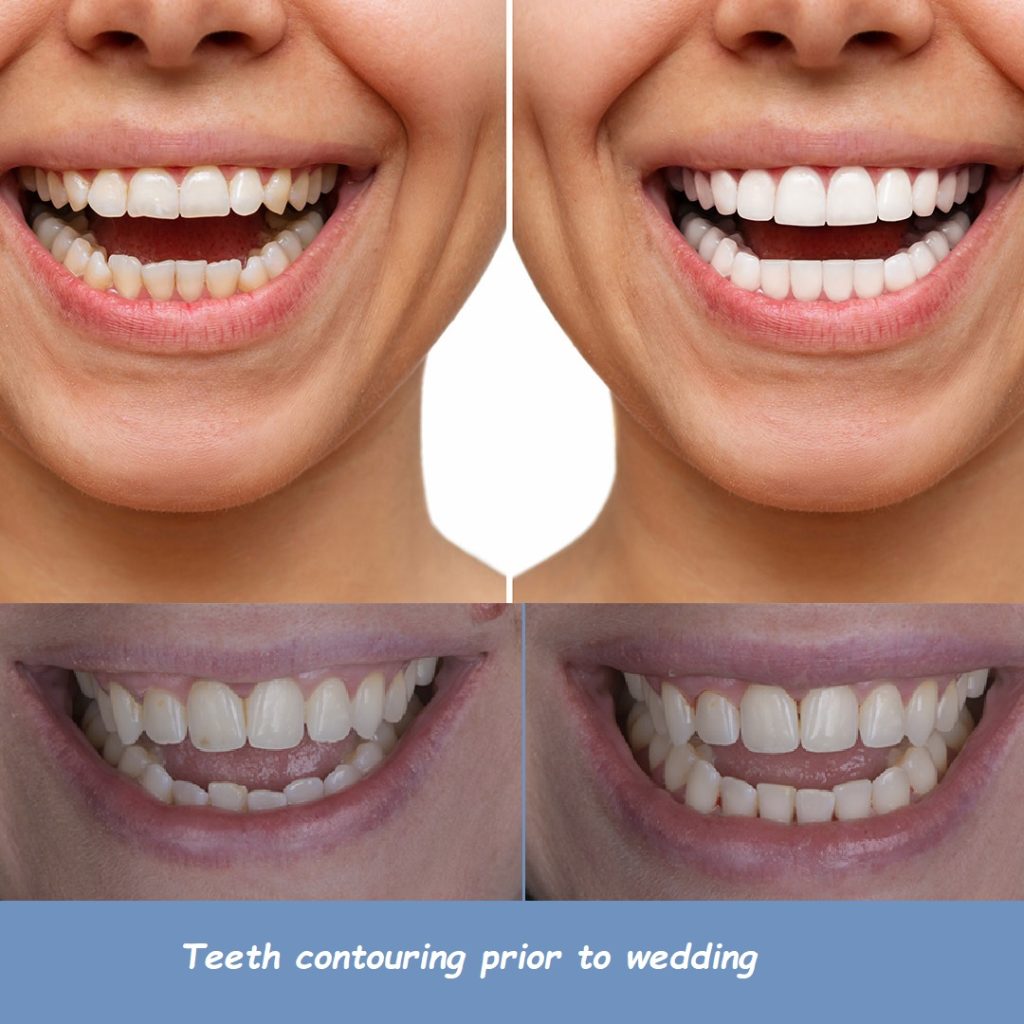gold tooth cap
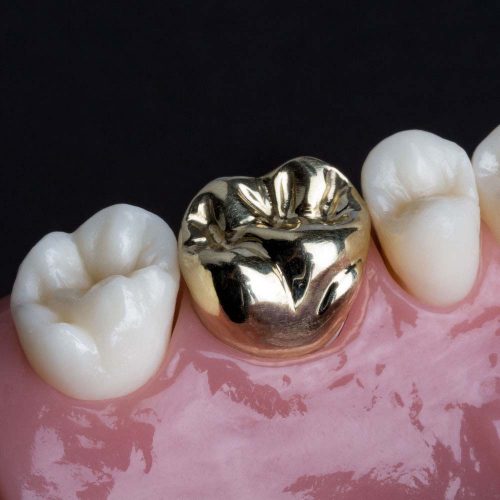
Gold tooth caps, also known as gold dental crowns, have been a popular choice in dentistry for many years. They offer a unique combination of durability, biocompatibility, and aesthetic appeal. This comprehensive guide will explore everything you need to know about gold tooth caps, including their benefits, types, procedure, cost, care, and comparisons with other dental restorations.
What is a Gold Tooth Cap?
A gold tooth cap, or gold dental crown, is a type of dental restoration that covers or “caps” a damaged, decayed, or weakened tooth. It is made from a gold alloy, which can include other metals such as copper, platinum, or palladium to enhance its strength and durability. Gold tooth caps are highly regarded for their longevity and the minimal wear they cause on opposing teeth.
Benefits of Gold Tooth Caps
1. Durability
Gold tooth caps are incredibly durable and can last for many decades with proper care. They are less likely to crack or fracture compared to porcelain or ceramic crowns. This makes them an excellent choice for molars and other teeth that endure significant chewing pressure.
2. Biocompatibility
Gold is a biocompatible material, meaning it is not harmful to living tissues. This reduces the risk of allergic reactions and other complications. Gold tooth caps are also less likely to cause gum irritation compared to other materials.
3. Minimal Wear on Opposing Teeth
Gold crowns are gentle on opposing teeth, causing minimal wear. This is particularly beneficial for patients who grind their teeth or have a strong bite.
4. Customizable
Gold tooth caps can be customized to fit perfectly over the prepared tooth, ensuring a secure and comfortable fit. They can also be polished to a high shine, enhancing their aesthetic appeal.
5. Resistant to Corrosion
Gold is highly resistant to corrosion and tarnish, which means gold tooth caps maintain their integrity and appearance over time, even in the moist environment of the mouth.
Types of Gold Tooth Caps
Gold tooth caps can be classified based on their composition and design. Here are the main types:
1. Full Gold Crowns
Full gold crowns are made entirely of gold or a gold alloy. They offer the highest level of durability and are often used for molars and premolars.
2. Gold Inlays and Onlays
Gold inlays and onlays are partial crowns used to restore a damaged tooth without covering the entire tooth surface. They are custom-made to fit the cavity and are bonded to the tooth, offering a strong and durable restoration.
3. Porcelain-Fused-to-Gold Crowns
These crowns combine the strength of a gold core with the natural appearance of a porcelain exterior. They offer a good balance between durability and aesthetics, making them suitable for both front and back teeth.
The Procedure for Getting a Gold Tooth Cap
The process of getting a gold tooth cap typically involves multiple visits to the dentist. Here is a step-by-step overview of the procedure:
1. Initial Consultation
During the initial consultation, the dentist will examine your teeth, take X-rays, and discuss your treatment options. If a gold tooth cap is recommended, the dentist will explain the benefits and costs involved.
2. Tooth Preparation
The tooth is prepared by removing any decay and reshaping it to accommodate the crown. This may involve removing a portion of the tooth structure to ensure a proper fit for the crown.
3. Impression Taking
An impression of the prepared tooth is taken using dental putty or a digital scanner. This impression is sent to a dental laboratory where the gold crown is custom-made to fit the exact specifications of your tooth.
4. Temporary Crown
While the permanent crown is being fabricated, a temporary crown is placed over the prepared tooth to protect it. The temporary crown is usually made of acrylic or composite material and is cemented with temporary cement.
5. Final Crown Placement
Once the gold crown is ready, you will return to the dentist for the final placement. The temporary crown is removed, and the gold crown is fitted over the tooth. The dentist will check the fit, make any necessary adjustments, and then cement the crown in place.
6. Follow-Up
A follow-up visit may be scheduled to ensure the crown is functioning properly and to address any concerns or adjustments that may be needed.
Cost of Gold Tooth Caps
The cost of a gold tooth cap can vary widely depending on several factors, including the amount of gold used, the complexity of the procedure, and the dentist’s expertise. On average, the cost of a gold crown can range from $800 to $2,500 per tooth. Here are some factors that influence the cost:
1. Material
The price of gold fluctuates, which can impact the cost of gold crowns. Crowns with higher gold content are generally more expensive.
2. Dental Laboratory Fees
Custom-made crowns require the services of a dental laboratory, which can add to the overall cost.
3. Dentist’s Fees
The dentist’s experience, location, and practice overhead can affect the cost. Dentists in urban areas or those with specialized training may charge higher fees.
4. Additional Procedures
If additional treatments, such as root canal therapy or tooth buildup, are required before placing the crown, this can increase the total cost.
Insurance Coverage
Dental insurance may cover a portion of the cost of gold crowns, particularly if they are deemed medically necessary. It’s important to check with your insurance provider to understand your coverage and any out-of-pocket expenses.
Caring for Gold Tooth Caps
Proper care and maintenance are essential to ensure the longevity of your gold tooth cap. Here are some tips to help you care for your gold crown:
1. Good Oral Hygiene
Maintain a regular oral hygiene routine, including brushing twice a day, flossing daily, and using an antibacterial mouthwash. This helps prevent plaque buildup and gum disease, which can affect the crown and surrounding teeth.
2. Regular Dental Check-Ups
Visit your dentist regularly for check-ups and cleanings. Regular visits allow your dentist to monitor the condition of the crown and address any issues early.
3. Avoid Hard Foods
While gold crowns are durable, it’s best to avoid chewing on hard foods like ice, popcorn kernels, and hard candies, which can damage the crown or the underlying tooth.
4. Address Teeth Grinding
If you grind your teeth at night, consider using a night guard to protect your crown and natural teeth from excessive wear.
5. Avoid Staining Foods and Drinks
Gold crowns do not stain, but the surrounding teeth can. To maintain a uniform appearance, avoid excessive consumption of staining foods and drinks like coffee, tea, and red wine.
Comparisons with Other Dental Restorations
Gold Crowns vs. Porcelain Crowns
- Durability: Gold crowns are more durable and resistant to cracking compared to porcelain crowns.
- Aesthetics: Porcelain crowns offer a more natural appearance and are better suited for front teeth.
- Wear on Opposing Teeth: Gold crowns cause less wear on opposing teeth compared to porcelain crowns.
Gold Crowns vs. Ceramic Crowns
- Durability: Gold crowns are generally more durable than ceramic crowns.
- Biocompatibility: Both materials are biocompatible, but gold crowns are less likely to cause gum irritation.
- Cost: Ceramic crowns can be more affordable than gold crowns, depending on the specific materials used.
Gold Crowns vs. Composite Fillings
- Durability: Gold crowns are much more durable and longer-lasting than composite fillings.
- Cost: Composite fillings are less expensive than gold crowns but may need to be replaced more frequently.
- Aesthetics: Composite fillings are tooth-colored and blend well with natural teeth, making them a better choice for visible areas.
Common Myths and Misconceptions
Myth: Gold Crowns Are Outdated
While some may view gold crowns as old-fashioned, they remain a highly effective and durable option for dental restorations. Their longevity and biocompatibility make them a valuable choice for many patients.
Myth: Gold Crowns Are Only for Wealthy Individuals
Although gold crowns can be more expensive than other types of crowns, they are an investment in long-term dental health. Many dental insurance plans cover a portion of the cost, and payment plans may be available to make them more accessible.
Myth: Gold Crowns Are Not Aesthetic
Gold crowns can be highly polished to achieve a smooth and shiny appearance. While they may not match the natural tooth color, they can be an aesthetic choice for back teeth and individuals who appreciate the unique look of gold.
Conclusion
Gold tooth caps, or dental crowns, offer a durable, biocompatible, and long-lasting solution for restoring damaged or weakened teeth. With their many benefits, including minimal wear on opposing teeth and resistance to corrosion, gold crowns remain a valuable option in modern dentistry. Understanding the procedure, costs, and care involved can help you make an informed decision about whether a gold tooth cap is the right choice for you. Whether you prioritize durability, biocompatibility, or aesthetics, gold crowns provide a reliable and effective dental restoration that can enhance your oral health for many years to come.
Are Gold Caps Good for Teeth?
Gold caps, or gold dental crowns, are considered highly effective for various dental applications due to their durability, biocompatibility, and minimal wear on opposing teeth. Here are the key reasons why gold caps are good for teeth:
- Durability: Gold crowns are known for their strength and longevity. They can withstand significant chewing pressure without cracking or chipping, making them ideal for molars and other teeth that experience heavy use.
- Biocompatibility: Gold is a biocompatible material, meaning it does not cause adverse reactions in the body. This makes gold crowns a safe option for people with metal allergies or sensitivities.
- Minimal Wear on Opposing Teeth: Gold crowns are gentle on the teeth they come into contact with during chewing. Unlike some other materials, gold does not cause excessive wear on opposing teeth, preserving overall dental health.
- Corrosion Resistance: Gold does not corrode or tarnish, ensuring the crown maintains its integrity and appearance over time, even in the moist environment of the mouth.
- Precision Fit: Gold can be cast to extremely precise specifications, ensuring a snug and accurate fit over the prepared tooth. This precision helps prevent bacterial infiltration and further decay.
Why Do People Wear Gold Caps on Their Teeth?
People choose gold caps for their teeth for several reasons, including:
- Durability and Longevity: Gold caps are one of the most durable types of dental restorations, often lasting decades with proper care. Their longevity makes them a cost-effective choice in the long term.
- Strength: Gold is a strong material that can handle the forces of chewing and grinding, making it suitable for teeth that endure significant stress.
- Biocompatibility: Gold is less likely to cause allergic reactions or irritate the gums, making it a good option for individuals with sensitivities to other dental materials.
- Minimal Wear on Opposing Teeth: As mentioned, gold crowns are less abrasive to opposing teeth compared to some other materials, reducing the risk of additional dental issues.
- Aesthetic and Cultural Preferences: Some people prefer the look of gold teeth for aesthetic or cultural reasons. Gold teeth can symbolize wealth, status, or personal style in various cultures.
- Precision and Customization: Gold crowns can be made with high precision, ensuring a perfect fit and comfortable feel. This customization enhances the overall dental experience.
Are Gold Tooth Crowns Worth Money?
Gold tooth crowns can be more expensive than other types of dental crowns due to the cost of the material and the craftsmanship involved in creating them. However, they are often considered worth the investment for several reasons:
- Longevity: Gold crowns can last for decades, often outlasting other types of crowns. This longevity can make them a more cost-effective option over time, despite the higher initial expense.
- Durability: Gold crowns are highly resistant to wear and damage, reducing the need for repairs or replacements.
- Minimal Maintenance: Gold crowns require minimal maintenance beyond regular dental hygiene practices. They do not corrode or tarnish, maintaining their appearance and function over the years.
- Comfort and Fit: The precision fit of gold crowns ensures comfort and effectiveness, reducing the risk of complications like tooth decay or gum disease around the crown.
- Biocompatibility: Gold crowns are safe for individuals with metal allergies or sensitivities, reducing the risk of adverse reactions.
Which Tooth Cap is Best?
The best type of tooth cap, or dental crown, depends on several factors, including the location of the tooth, the patient’s preferences, and the specific dental needs. Here are some common types of tooth caps and their benefits:
- Gold Crowns: Best for durability, strength, and biocompatibility. Ideal for molars and teeth that endure heavy chewing forces. They are also gentle on opposing teeth.
- Porcelain Crowns: Offer the most natural appearance, making them ideal for front teeth. They can be color-matched to blend seamlessly with natural teeth.
- Porcelain-Fused-to-Metal (PFM) Crowns: Combine the strength of metal with the aesthetic appeal of porcelain. Suitable for both front and back teeth.
- Ceramic Crowns: Provide a natural look and are a good choice for patients with metal allergies. They are strong and durable but not as robust as gold crowns.
- Zirconia Crowns: Extremely strong and durable, offering a natural appearance. They are suitable for both front and back teeth and are highly resistant to chipping and cracking.
- Composite Crowns: Made from composite resin, they are less expensive but not as durable as other options. Best for temporary or short-term restorations.
What Are the Side Effects of Gold Teeth?
Gold teeth, including gold crowns and caps, are generally safe and well-tolerated. However, like any dental restoration, there are some potential side effects and considerations:
- Allergic Reactions: Although rare, some individuals may have an allergic reaction to the metals used in gold alloys. This can cause symptoms like swelling, redness, and discomfort around the crown.
- Gum Irritation: Improperly fitted gold crowns can cause gum irritation or recession. Ensuring a precise fit and proper placement by an experienced dentist can minimize this risk.
- Aesthetic Concerns: While some people appreciate the look of gold teeth, others may find them less aesthetically pleasing, particularly for visible front teeth. This is a subjective concern based on personal preference.
- Cost: Gold crowns can be more expensive than other types of crowns. The higher cost may be a consideration for some patients, although the longevity and durability of gold crowns can offset the initial expense.
- Wear on Opposing Teeth: Although minimal, any dental restoration can cause some wear on opposing teeth. Gold crowns are generally gentler than other materials, but patients who grind their teeth should still take precautions.
In conclusion, gold tooth caps offer numerous benefits, including durability, biocompatibility, and minimal wear on opposing teeth. They are a worthwhile investment for many patients, providing long-term dental health and functionality. However, the best type of tooth cap depends on individual needs and preferences, and it’s essential to consult with a dentist to determine the most suitable option for your specific dental situation.
Are Gold Teeth Permanent?
Gold teeth, including gold dental crowns and caps, are considered permanent dental restorations. Once a gold tooth cap is cemented or bonded onto a prepared tooth, it is designed to stay in place for many years. The longevity of a gold tooth cap depends on several factors, including oral hygiene practices, regular dental check-ups, and the amount of wear and tear the tooth undergoes from chewing and grinding.
While gold itself is highly durable and resistant to corrosion, the longevity of a gold tooth cap can also be influenced by the condition of the underlying tooth structure. Proper care and maintenance, such as brushing and flossing regularly and avoiding hard foods that could damage the crown, can help extend the lifespan of a gold tooth cap.
In cases where a gold tooth cap becomes damaged or worn over time, it may need to be replaced by a dentist to maintain oral health and functionality. Regular dental visits allow dentists to monitor the condition of dental restorations and recommend any necessary repairs or replacements.
How Long Does a Gold Tooth Last?
Gold tooth caps are known for their durability and longevity. On average, a well-maintained gold tooth cap can last anywhere from 10 to 30 years or even longer. The lifespan of a gold tooth cap depends on several factors:
- Quality of Materials: The quality and purity of the gold alloy used in the crown can impact its durability. Higher-quality alloys tend to be more resistant to wear and corrosion.
- Oral Hygiene: Good oral hygiene practices, including regular brushing, flossing, and dental check-ups, can help prolong the life of a gold tooth cap by preventing gum disease and decay.
- Chewing Habits: Individuals who grind their teeth (bruxism) or habitually chew on hard objects may experience more wear on their dental restorations, including gold crowns.
- Dentist’s Skill: The skill and expertise of the dentist who places the gold crown can affect its longevity. Proper preparation and placement ensure a secure fit and reduce the risk of complications.
- Overall Oral Health: The health of the underlying tooth structure and surrounding gums also plays a role in how long a gold tooth cap lasts. Maintaining good oral health is essential for the longevity of any dental restoration.
If a gold tooth cap shows signs of wear, damage, or decay, it is important to consult with a dentist promptly. Early intervention can help prevent further complications and may extend the life of the restoration through appropriate dental care.
Can You Eat with a Gold Tooth Cap?
Yes, you can eat with a gold tooth cap just like you would with natural teeth. Gold tooth caps are designed to withstand the forces of chewing and biting, making them suitable for eating a wide variety of foods. The durability of gold makes it particularly well-suited for molars and other teeth that endure heavy chewing pressure.
However, it is important to practice good oral hygiene and take care when eating certain foods to prevent damage to the gold crown and underlying tooth structure:
- Avoid Hard Foods: While gold is strong, biting down on very hard foods like ice cubes, hard candies, or nuts can potentially damage the crown or cause it to dislodge.
- Chew Carefully: Take care not to bite down forcefully on objects that could stress the crown or your natural teeth.
- Maintain Oral Hygiene: Brush and floss regularly to keep the area around the gold tooth cap clean and free from plaque buildup, which can contribute to gum disease and decay.
If you experience any discomfort, sensitivity, or notice changes in the fit of your gold tooth cap while eating, it is advisable to consult with your dentist. They can assess the crown’s condition and make any necessary adjustments to ensure continued comfort and functionality.
Is Dental Gold Real Gold?
Yes, dental gold used in dental restorations such as crowns and caps is real gold. However, it is not typically pure gold (24 karats) but rather an alloy that combines gold with other metals for added strength and durability. The composition of dental gold alloys can vary, but they generally contain gold along with metals such as silver, copper, platinum, or palladium.
The purity of dental gold alloys is measured in karats, similar to jewelry gold. Common karat values for dental gold range from 10 to 22 karats, with higher karat values indicating a higher gold content. For example:
- 18 Karat Gold: Contains 75% gold and 25% other metals.
- 22 Karat Gold: Contains 91.7% gold and 8.3% other metals.
Dental gold alloys are specifically formulated to withstand the harsh oral environment, resist corrosion, and maintain their integrity over time. The choice of gold alloy may depend on factors such as the location of the tooth, the patient’s oral health needs, and aesthetic preferences.
Who First Wore Gold Teeth?
The history of gold teeth dates back thousands of years and has cultural and historical significance in various civilizations around the world. The practice of wearing gold teeth, particularly as dental adornments or dental restorations, has evolved over time and continues to be observed in different contexts:
- Ancient Civilizations: Gold dental work has been found in archaeological discoveries dating back to ancient civilizations such as the Egyptians, Etruscans, and Romans. These cultures used gold for both decorative purposes and dental restorations.
- Cultural Traditions: In some cultures, wearing gold teeth is a tradition that signifies status, wealth, or beauty. For example, in West African cultures, gold teeth have been worn as a symbol of prosperity and identity.
- Modern Usage: In modern times, gold teeth have gained popularity in various communities, including hip-hop culture and among individuals seeking unique dental aesthetics.
While the exact individual or culture credited with first wearing gold teeth is not definitively documented, the practice has persisted throughout history and continues to be a choice for dental restorations and personal expression today.
Who Was the First Person with Gold Teeth?
The identity of the first person to wear gold teeth as a dental adornment or restoration is not specifically documented in historical records. The use of gold in dentistry dates back millennia and has been practiced by various civilizations for both functional and aesthetic purposes.
In ancient times, gold was valued for its malleability, durability, and perceived medicinal properties. It was used to create dental prosthetics, fillings, and decorative adornments for teeth. Historical evidence, such as archaeological finds and written accounts, indicates that gold dental work was practiced by cultures across different continents.
Today, the use of gold teeth continues to be a personal choice for individuals seeking durable and aesthetically pleasing dental restorations. Whether for functional restoration of damaged teeth or as a cultural and personal expression, gold teeth remain a unique option in modern dentistry.
In conclusion, gold teeth, including gold tooth caps and crowns, offer durability, biocompatibility, and longevity as dental restorations. They are designed to be permanent solutions for restoring damaged teeth and are suitable for eating and everyday use. Understanding their benefits, care requirements, and historical context can help individuals make informed decisions about their dental health and aesthetic preferences.

